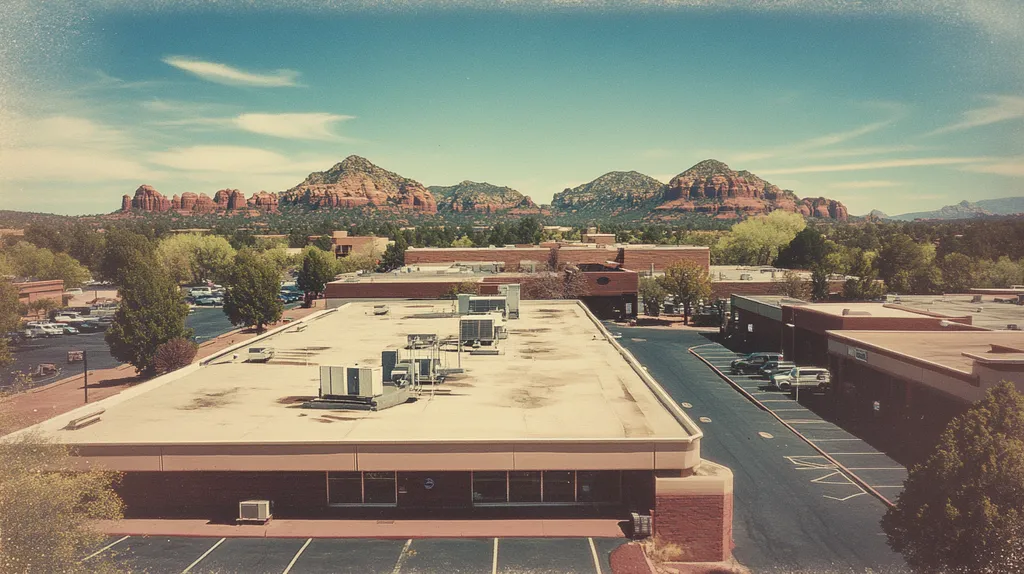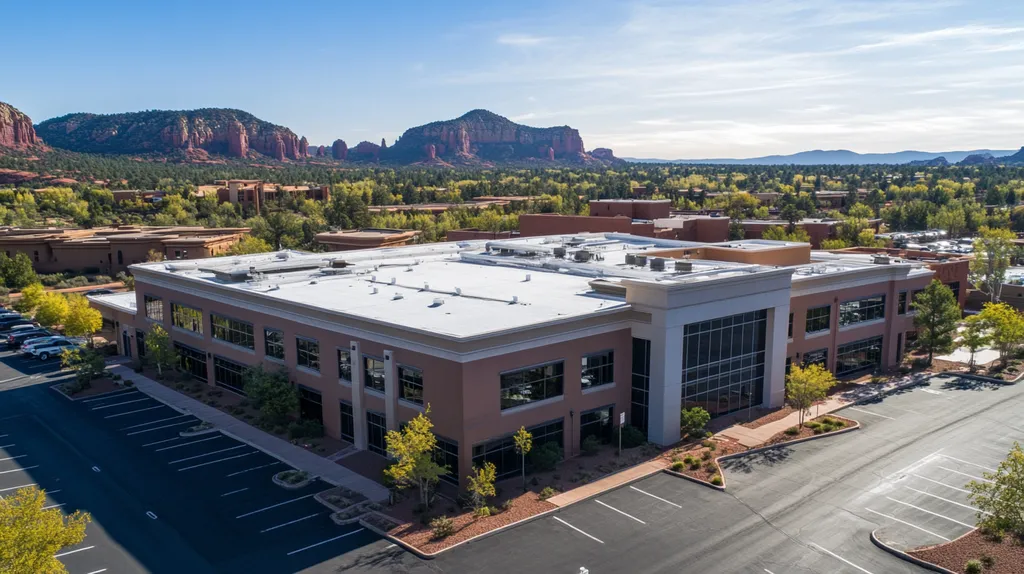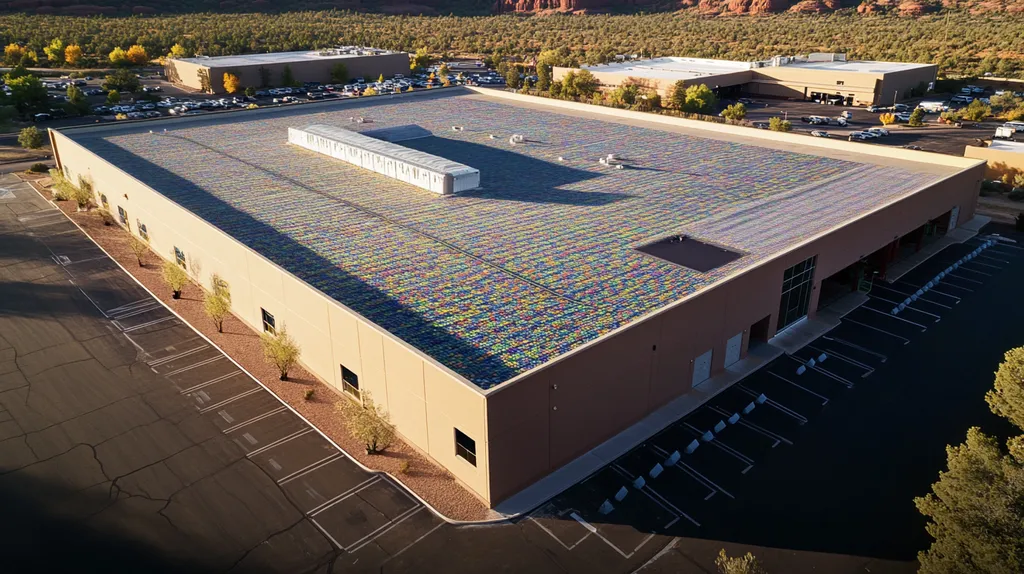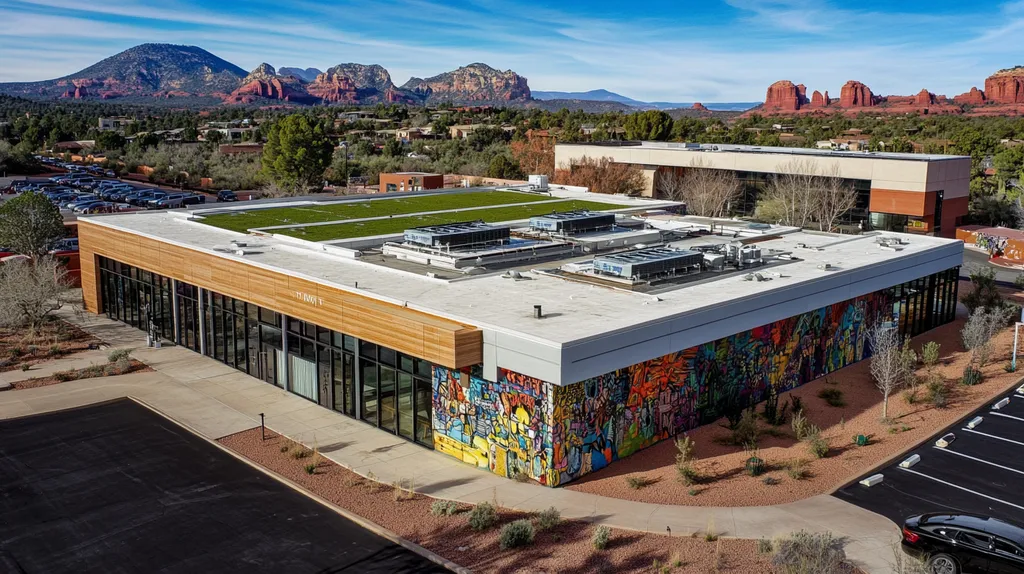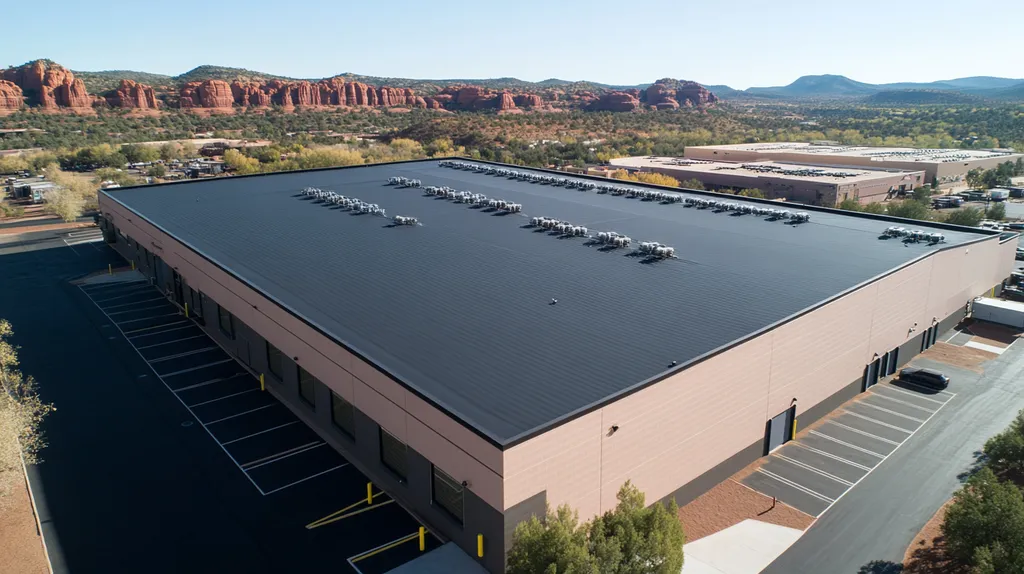Welcome to today’s Battle Royale featuring two roofing heavyweights: “Thermal-Reflective Membranes” in the east corner versus “Insulated Metal Panels” in the west!
Tonight’s showdown pits these contenders against each other across six punishing rounds designed to test every aspect of their performance for Heat-Resistant Commercial Roofs.
At stake? Millions in potential costs, decades of building protection, and the critical performance demands of modern commercial and industrial facilities.
Our professional judging panel will evaluate each round on technical merit, real-world performance, and value delivery. After all six rounds, we’ll declare our ultimate champion.
Ladies and gentlemen, facility managers and building owners… it’s time to rumble!
ROUND 1: INITIAL COSTS & INSTALLATION
When selecting a heat-resistant commercial roof, the financial impact reaches far beyond the initial price tag. Every day of installation disrupts business operations, and choosing the wrong system can lead to decades of increased costs. Property owners must carefully weigh material expenses, installation requirements, and project timelines to make an informed decision that protects both their building and their budget.
Material Expenses
PVC-based thermal-reflective membranes typically cost between $10.00 to $12.50 per square foot, offering an economical entry point for heat-resistant roofing. These membranes feature two layers of PVC with a polyester reinforcement, creating a durable yet cost-effective solution that reflects up to 80% of sunlight. (source: Solutions GC)
Insulated metal panels command premium prices due to their multi-layer construction combining rigid foam cores with metal facings. While their superior insulation properties can offset costs over time, the initial investment can be 30-40% higher than membrane options.
For pure material costs, thermal-reflective membranes hold a clear ADVANTAGE, making them particularly attractive for projects with tight budgets.
Installation Complexity
Thermal-reflective membranes offer straightforward installation processes that most qualified roofing crews can handle efficiently. The materials are lightweight and flexible, requiring minimal specialized equipment and allowing for easier manipulation around roof penetrations and edges.
Insulated metal panels demand precise handling and installation techniques due to their rigid nature and interlocking components. The complex installation requires specialized crews with specific training, potentially limiting contractor options and increasing labor costs.
The simpler installation requirements of thermal-reflective membranes give them an ADVANTAGE in this category, reducing both labor costs and the risk of installation errors.
Project Timeline
The flexibility and lightweight nature of thermal-reflective membranes allow for rapid installation, often reducing project duration by 40% compared to panel systems. Crews can cover large areas quickly, and weather delays have less impact on the overall timeline.
Insulated metal panel installation involves more steps, including precise measurements, careful alignment, and specialized fastening techniques. Each panel must be individually placed and secured, leading to longer installation periods.
For project timeline efficiency, thermal-reflective membranes gain another ADVANTAGE, minimizing business disruption and reducing labor costs.
ROUND 1 WINNER: THERMAL-REFLECTIVE MEMBRANES
ROUND 2: DURABILITY & LIFESPAN
Every year, commercial property owners lose millions of dollars to premature roof failures and unnecessary replacements. The durability and longevity of a roofing system directly impacts maintenance costs, energy efficiency, and building protection for decades to come. Understanding how different roofing materials perform under harsh conditions is critical for making an investment that truly delivers long-term value.
Weather Resistance
PVC-based thermal-reflective membranes demonstrate exceptional resistance to UV rays, chemicals, and water infiltration. These membranes maintain their protective properties even when exposed to harsh environmental conditions, including extreme temperature fluctuations and acidic rainfall. (source: BECN)
The seamless nature of these membranes provides superior protection against water penetration, while their reflective properties help minimize thermal stress and degradation. The material’s flexibility allows it to accommodate building movement without compromising its protective barrier.
Insulated metal panels excel at withstanding severe weather events due to their rigid construction and interlocking design. Their metal exterior provides excellent impact resistance against hail and wind-driven debris.
However, panels can be vulnerable to moisture infiltration at seams and fastening points if not properly maintained. Their metal surfaces may also show wear more visibly over time compared to membrane systems.
For weather resistance, thermal-reflective membranes gain an ADVANTAGE due to their superior waterproofing capabilities and resistance to environmental degradation.
Structural Integrity
Thermal-reflective membranes create a lightweight, continuous surface that puts minimal stress on building structures. Their flexibility allows them to absorb building movement and thermal expansion without compromising performance.
These membranes can be vulnerable to punctures from foot traffic or falling objects, though modern formulations include reinforcement layers that significantly improve their durability. Regular inspection paths can be integrated to protect high-traffic areas.
Insulated metal panels provide superior structural strength through their sandwich construction of metal faces and rigid foam cores. This design creates exceptional spanning capabilities and resistance to structural loads.
The robust construction of metal panels makes them highly resistant to physical damage and better suited for locations with extreme weather conditions or heavy mechanical equipment access needs.
For structural integrity, insulated metal panels claim an ADVANTAGE due to their superior load-bearing capabilities and resistance to physical damage.
Life-Cycle Performance
Thermal-reflective membranes typically deliver 20-30 years of reliable service when properly maintained. Their simple surface design makes repairs straightforward and cost-effective when needed.
The reflective properties of these membranes remain effective throughout their lifespan, maintaining energy efficiency benefits long-term. Regular cleaning and inspection can extend their functional life well beyond warranty periods.
Insulated metal panels can last 30-50 years with appropriate maintenance. Their durability comes with higher maintenance requirements, particularly around seams and fasteners that need regular inspection and occasional resealing.
While metal panels offer excellent longevity, their repair costs tend to be higher due to the complexity of replacing damaged sections. Their insulation performance can also degrade over time if moisture penetrates the panel system.
For life-cycle performance, the systems achieve a TIE, with each offering distinct long-term benefits that must be weighed against specific project requirements.
ROUND 2 WINNER: THERMAL-REFLECTIVE MEMBRANES
ROUND 3: PERFORMANCE FACTORS
As energy costs continue to skyrocket, commercial buildings waste millions annually through inefficient roofing systems. Studies show that poor roof performance can increase cooling costs by up to 40% and accelerate building deterioration. The right roofing solution must balance immediate temperature control with long-term thermal efficiency, making performance factors crucial in the decision-making process.
Heat Resistance
Thermal-reflective membranes leverage advanced PVC technology to create a powerful defense against solar heat gain. These systems combine two layers of PVC with polyester reinforcement, reflecting up to 80% of sunlight while maintaining flexibility and durability. (source: Solutions GC)
The membrane’s continuous surface eliminates thermal bridges, preventing heat from finding alternative paths into the building. Their light color and reflective properties actively repel solar radiation, significantly reducing roof surface temperatures.
Insulated metal panels rely on traditional barrier methods, using thick insulation cores to slow heat transfer. While effective at maintaining consistent internal temperatures, they absorb more solar radiation than reflective systems.
For active heat resistance, thermal-reflective membranes demonstrate a clear ADVANTAGE through their superior solar reflection capabilities.
Energy Efficiency
Thermal-reflective membranes work continuously to minimize cooling loads through their reflective properties. This active approach to temperature control can reduce air conditioning demands by up to 30% during peak summer months.
The seamless nature of membrane systems eliminates thermal breaks that could compromise efficiency. Their performance remains consistent across the entire roof surface, maximizing energy savings.
Insulated metal panels provide steady insulation value but lack the active heat rejection of reflective systems. While their insulation cores effectively slow heat transfer, they cannot match the dynamic cooling benefits of reflective membranes.
In terms of energy efficiency, thermal-reflective membranes gain another ADVANTAGE through their superior ability to reduce cooling loads.
Temperature Stability
Thermal-reflective membranes experience minimal temperature fluctuations due to their reflective properties. This stability reduces thermal stress on the roofing system and the building structure beneath.
The uniform surface temperature of membrane systems helps prevent condensation issues and maintains consistent interior conditions. However, their effectiveness can diminish if surface reflectivity is compromised by dirt or wear.
Insulated metal panels excel at maintaining stable temperatures through their substantial insulation cores. Their rigid construction and continuous insulation provide excellent thermal consistency throughout daily and seasonal temperature cycles.
For temperature stability, insulated metal panels claim an ADVANTAGE due to their superior insulation properties and consistent performance.
ROUND 3 WINNER: THERMAL-REFLECTIVE MEMBRANES
ROUND 4: MAINTENANCE REQUIREMENTS
Poor maintenance practices cost commercial building owners over $3.3 billion annually in premature roof replacements and emergency repairs. Even the most advanced roofing systems can fail early without proper care, making maintenance requirements a crucial factor in system selection. Understanding the upkeep demands of different roofing options helps owners protect their investment and avoid costly surprises.
Regular Inspection Requirements
Thermal-reflective membranes feature simple, continuous surfaces that streamline inspection processes. Their uniform construction makes it easy to spot potential issues like seam separation or surface damage during routine checks.
These membranes typically require only bi-annual professional inspections, with simple monthly visual checks by maintenance staff. Their reflective properties help prevent heat-related deterioration, reducing the frequency of damage-related inspections.
Insulated metal panels demand more frequent and detailed inspections due to their complex construction. Each panel joint, fastener, and trim piece must be carefully examined for early signs of moisture intrusion or metal fatigue.
The multiple components and potential failure points of metal panel systems necessitate quarterly professional inspections. This increased inspection frequency drives up long-term maintenance costs.
For inspection requirements, thermal-reflective membranes gain an ADVANTAGE through their simplified maintenance needs and reduced inspection frequency.
Cleaning and Surface Maintenance
Thermal-reflective membranes require basic cleaning to maintain their reflective properties. A simple pressure washing twice per year typically suffices to remove dirt and debris that could impact performance.
The smooth surface of these membranes prevents dirt accumulation and makes cleaning straightforward. Their chemical resistance also allows for the safe use of various cleaning solutions when needed.
Insulated metal panels need more intensive cleaning protocols to prevent corrosion and maintain appearance. Panel joints and fastener heads require particular attention to prevent moisture-related issues.
Metal surfaces can show wear more visibly and may need periodic recoating to maintain their protective finish. This additional maintenance step increases both labor and material costs.
For cleaning and surface maintenance, thermal-reflective membranes claim another ADVANTAGE due to their simpler cleaning requirements and resistant surface properties.
Repair Procedures
Thermal-reflective membranes offer straightforward repair options when damage occurs. Small tears or punctures can be effectively patched using standard heat-welding techniques, often completing repairs in a single visit.
The homogeneous nature of membrane systems allows for seamless integration of repairs. Most maintenance crews can handle common repair needs with minimal specialized training.
Insulated metal panels present significant challenges when repairs become necessary. Damaged panels often require complete replacement to maintain system integrity, as spot repairs can compromise the interlocking design.
Panel replacement involves careful dismantling of adjacent sections and precise reinstallation to prevent water infiltration. These complex procedures increase both repair time and costs.
For repair procedures, thermal-reflective membranes secure another ADVANTAGE through their simpler repair requirements and lower associated costs.
ROUND 4 WINNER: Thermal-Reflective Membranes
ROUND 5: SUSTAINABILITY CREDENTIALS
Environmental regulations and market demands are reshaping commercial roofing requirements. With buildings accounting for 40% of U.S. energy consumption and roofing materials filling landfills at alarming rates, sustainability has become a critical decision factor. Property owners must now evaluate roofing choices not just for performance, but for their total environmental impact from manufacturing through disposal.
Energy Efficiency
Modern thermal-reflective membranes utilize polypropylene and ethylene-propylene rubber reinforced with polymer mats to achieve superior energy performance. These materials create highly reflective surfaces that significantly reduce cooling loads and urban heat island effects. (source: Solutions GC)
The continuous nature of membrane systems eliminates thermal bridging common in other roofing types. Their light color and reflective properties can reduce roof surface temperatures by up to 50°F compared to traditional dark surfaces.
Insulated metal panels rely on thick foam cores to provide passive insulation benefits. While effective at maintaining consistent interior temperatures, they absorb more solar radiation than reflective systems.
For energy efficiency, thermal-reflective membranes claim an ADVANTAGE through their superior heat rejection capabilities.
Recyclability
Thermal-reflective membranes present significant end-of-life challenges due to their composite construction. Most membrane materials cannot be effectively separated for recycling, resulting in substantial landfill waste.
Current recycling technology struggles to process these synthetic compounds cost-effectively. The inability to recycle these materials conflicts with growing corporate sustainability initiatives.
Insulated metal panels feature highly recyclable steel or aluminum exterior layers. These metal components can be separated from insulation cores and reprocessed into new building materials.
The metal content maintains value in recycling markets, creating economic incentives for proper disposal. This characteristic aligns with circular economy principles and waste reduction goals.
For recyclability, insulated metal panels earn an ADVANTAGE through their recoverable metal content.
Lifecycle Impact
Thermal-reflective membranes require significant petroleum resources during manufacturing. Their production process generates substantial greenhouse gas emissions and chemical byproducts.
The typical 20-30 year lifespan means more frequent replacement cycles compared to alternative systems. Each replacement multiplies the environmental impact through additional manufacturing and disposal requirements.
Insulated metal panels demonstrate superior durability with service lives often exceeding 40 years. Their longer lifespan reduces the frequency of replacement and associated environmental impacts.
The metal components’ recyclability creates a closed-loop material cycle that conserves natural resources. This factor, combined with extended service life, minimizes long-term environmental burden.
For lifecycle impact, insulated metal panels secure an ADVANTAGE through their longevity and material recovery potential.
ROUND 5 WINNER: INSULATED METAL PANELS
ROUND 6: SPECIALIZED APPLICATIONS
Specialized commercial roofing applications present unique challenges that standard solutions often fail to address. From food processing facilities requiring strict temperature control to manufacturing plants dealing with chemical emissions, choosing the wrong roofing system can lead to operational failures costing millions in damages and lost productivity. Understanding how different roofing options perform in specialized settings is crucial for making informed decisions that protect both assets and operations.
Chemical and Environmental Resistance
In industrial settings, roofing systems face constant exposure to harsh chemicals, pollutants, and environmental contaminants. These aggressive substances can rapidly degrade standard roofing materials, leading to premature failure and potential safety hazards.
Thermal-reflective membranes demonstrate exceptional resistance to chemicals, water infiltration, and UV radiation. Their PVC composition creates a robust barrier against industrial emissions while maintaining fire-retardant properties that enhance facility safety. (source: BECN)
Insulated metal panels offer good chemical resistance through their protective metal facings but can be vulnerable at seams and connection points. Their rigid construction makes them less adaptable to chemical exposure variations across the roof surface.
For chemical and environmental resistance, thermal-reflective membranes gain an ADVANTAGE through their superior chemical resistance and seamless protection.
Temperature-Critical Applications
Facilities like cold storage warehouses, data centers, and food processing plants require precise temperature control to maintain operations. Roofing system performance directly impacts temperature stability and energy consumption in these specialized environments.
Thermal-reflective membranes excel at minimizing solar heat gain but provide limited insulation value on their own. They typically require additional insulation layers to meet the demanding requirements of temperature-critical facilities.
Insulated metal panels deliver superior temperature control through their integrated insulation cores and thermal break designs. Their consistent R-value and minimal thermal bridging make them ideal for facilities requiring strict temperature maintenance.
For temperature-critical applications, insulated metal panels claim an ADVANTAGE through their superior insulation properties and temperature stability.
Process-Specific Requirements
Many industrial facilities have unique process requirements that impact roofing selection. These can include resistance to specific chemicals, accommodation of roof penetrations, or integration with process equipment.
Thermal-reflective membranes offer excellent flexibility in accommodating complex roof penetrations and equipment mounting needs. Their seamless nature and ability to be custom-fitted around obstacles provides superior protection against leaks.
Insulated metal panels present challenges when dealing with numerous roof penetrations due to their rigid construction. While they provide excellent support for mounted equipment, maintaining water-tight seals around penetrations requires extensive detailing.
For process-specific requirements, thermal-reflective membranes secure an ADVANTAGE through their superior adaptability and penetration accommodation.
ROUND 6 WINNER: THERMAL-REFLECTIVE MEMBRANES
AND THE WINNER IS…
After six grueling rounds of technical evaluation, we have our verdict. With a commanding 5-1 victory, THERMAL-REFLECTIVE MEMBRANES claim the championship belt in today’s heat-resistant commercial roofing showdown!
The champion dominated through superior performance in cost efficiency, installation speed, maintenance simplicity, and adaptability to specialized applications. Its knockout combination of exceptional chemical resistance, straightforward repairs, and active heat rejection capabilities proved unbeatable in today’s match-up.
But don’t count out Insulated Metal Panels! This heavyweight contender showed impressive strength in sustainability credentials and remains a top choice for temperature-critical facilities requiring maximum insulation value and structural integrity.
IMPORTANT NOTICE: While today’s match provides valuable insights, every building represents its own unique arena. Local climate conditions, structural requirements, and specific facility needs can significantly impact roofing system performance. Property owners should always consult qualified roofing professionals who can evaluate their specific situation and recommend solutions tailored to their building’s demands.
In the high-stakes world of commercial roofing, victory belongs to those who carefully match their facility’s specific requirements with the right contender’s strengths. Choose wisely, building owners – your property’s protection depends on it!
FREQUENTLY ASKED QUESTIONS
Q. What are the initial costs of a commercial roof?
A. Initial costs for a commercial roof vary greatly. Thermal-reflective membranes generally cost less per square foot compared to insulated metal panels. However, installation complexity and potential long-term energy savings also influence the overall financial impact.
Q. How long will a commercial roof last?
A. Lifespan varies by roofing type. Thermal-reflective membranes typically last 20-30 years, while insulated metal panels can serve 30-50 years with proper maintenance. Both options offer long-term value but may differ in maintenance requirements.
Q. Which commercial roof performs better in energy efficiency?
A. Thermal-reflective membranes generally outperform insulated metal panels in energy efficiency, as they actively reflect solar heat and reduce cooling loads significantly. This can lead to greater energy savings for building owners.
Q. What are the maintenance needs for a commercial roof?
A. Maintenance requirements differ. Thermal-reflective membranes need less frequent inspections and simpler cleaning procedures compared to insulated metal panels, which require regular detailed checks and careful cleaning to prevent corrosion.
Q. Can I get a sustainable commercial roof?
A. Yes, sustainability is a key factor to consider. Thermal-reflective membranes excel at energy efficiency, though their recyclability is limited. Insulated metal panels, while durable, are more recyclable, aligning better with sustainability initiatives.
Q. What about specialized applications for industrial roofs?
A. Different roofing types serve specialized needs. Thermal-reflective membranes offer flexibility and chemical resistance for unique environments, whereas insulated metal panels provide superior insulation and temperature stability for critical applications.
Q. How do roof aesthetics play a role in selection?
A. Aesthetics matter too! The look of a commercial roof can enhance property value and visual appeal. Thermal-reflective membranes often come in various colors, while insulated metal panels offer sleek, modern finishes that can elevate building designs.

